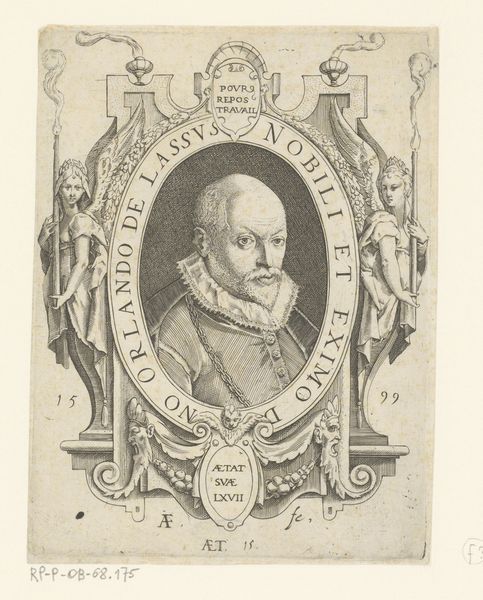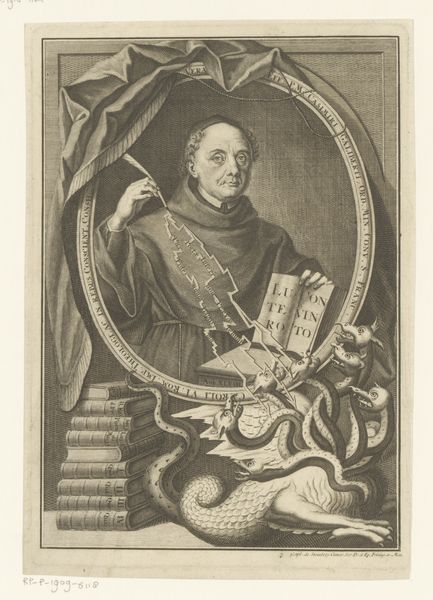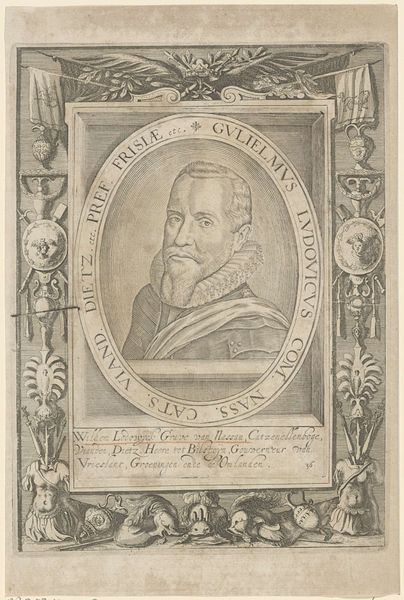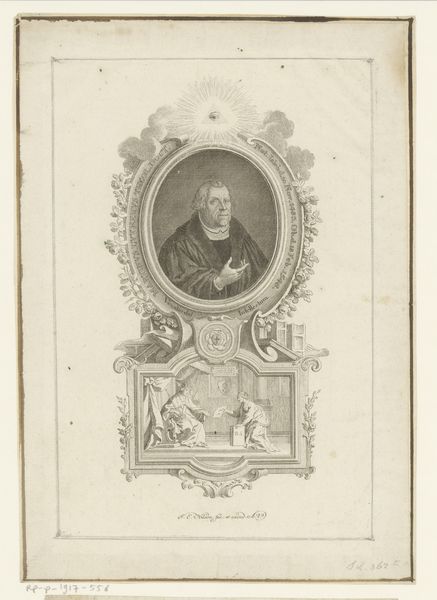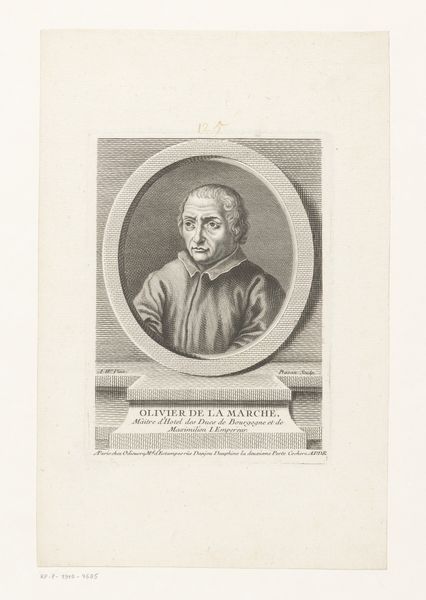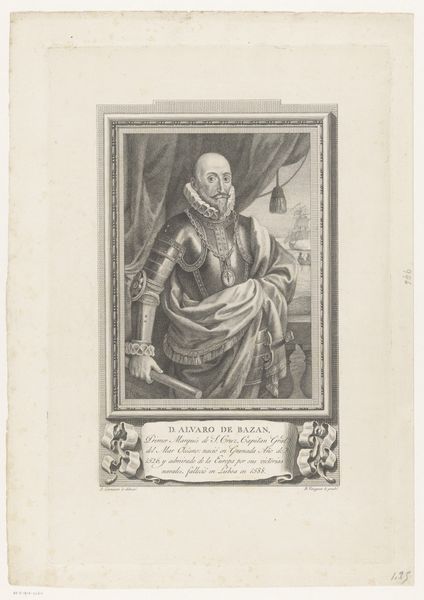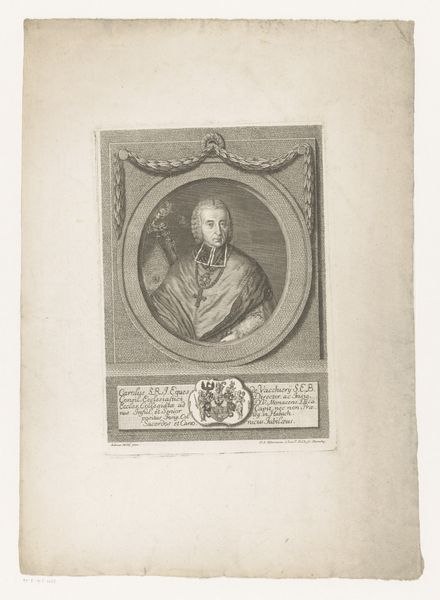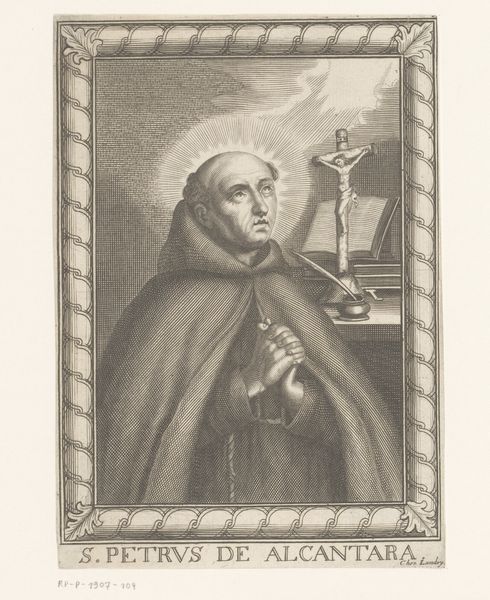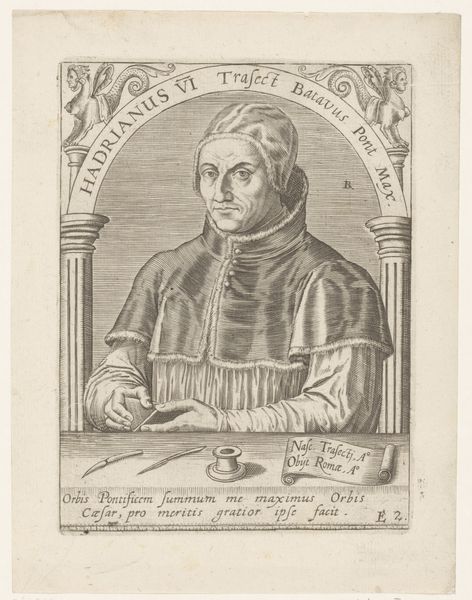
print, engraving
#
portrait
#
baroque
# print
#
history-painting
#
engraving
Dimensions: height 305 mm, width 222 mm
Copyright: Rijks Museum: Open Domain
This is an engraving of Carlo Giuseppe Imbonati, made in Rome in 1694 by Hubert Vincent. It’s made by incising lines into a metal plate, covering it with ink, and then pressing paper to receive the image. Look closely, and you'll see a network of fine, closely spaced lines, a testament to the engraver’s skill. This process was at the heart of early mass media. Engravings were the way that information was spread in the 17th century. It was slow and laborious, but it allowed for the relatively cheap and consistent reproduction of images. Here, the choice of the engraving medium is particularly interesting because we see Imbonati holding an open book with Hebrew script. The ability to reproduce and distribute such texts was crucial to maintaining Jewish culture in diaspora. In a world of censorship, engraving offered a subtle but powerful means of dissemination. This portrait is not just a likeness, it is a powerful demonstration of the era’s means of production.
Comments
No comments
Be the first to comment and join the conversation on the ultimate creative platform.
